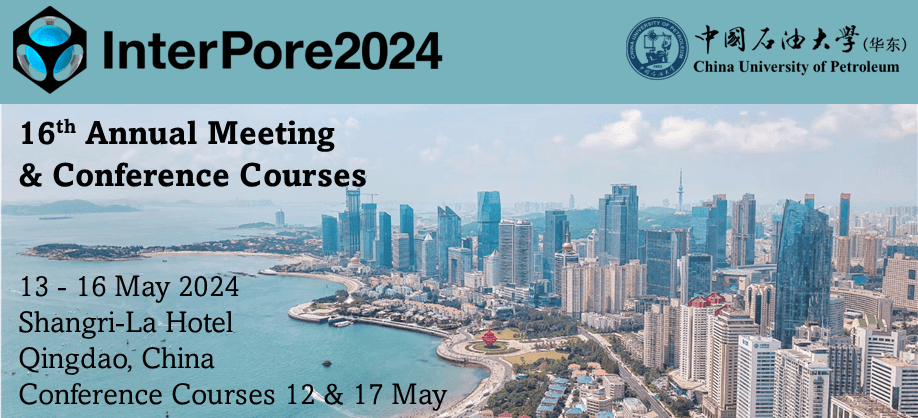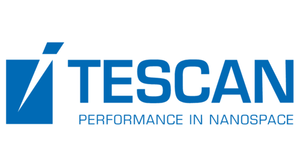Speaker
Description
Direct 3D imaging of natural or synthetic porosity below ~1μm in diameter often requires the application of Focused Ion Beam Scanning Electron Microscopy (FIB-SEM). This technique has several limitations: high cost and time demands, instrument availability, complex sample preparation and low field-of-view (FoV), restricting its suitability for operational industrial studies. SliceGAN, a generative adversarial network algorithm developed by Kench and Cooper (2021) reconstructs 3D pore space based on a 2D image input (Fig. 1). In conjunction with 2D SEM imaging, SliceGAN has the potential to generate representative porous media images considerably faster and cheaper than FIB-SEM. However, the original work (Kench and Cooper, 2021) did not validate the methodology against 3D images to check whether the synthetic reconstructed media replicate the original porous materials porosity, permeability, and pore size distributions.
The microporous layer (MPL) of the Gas Diffusion Electrode (Fig. 2), used for the electroconversion of CO2 into ethylene, methanol and other products (Weekes et al., 2018), was selected for the validation of the pore space reconstruction algorithm. Fully resolved images of the MPL porosity are necessary for subsequent modelling of electrode physical properties: permeability, diffusivity and conductivity (McLaughin et al., 2022). For this study, four FIB-SEM validation volumes from two scans at 5 and 10nm resolution and FoV varying from 51 to 94μm3 were analysed. Raw data was segmented, porosity calculated, and permeability of each volume modelled using a steady state single-phase direct numerical simulation in OpenFOAM (Fig. 3). Permeability variation from 4.04e-16 to 8.03e-16 m2 between different volumes is attributed to an insufficient FoV of individual scans, leading to unrepresentative models. A large image aspect ratio, inherent to FIB-SEM scanning, also led to variation of permeability in three principal orientations in the absence of any noticeable material anisotropy.
The open-source network architecture of SliceGAN was adapted to accommodate varying training data crop sizes. Two orthogonal SEM images at 1.7nm resolution and FoV of 315 μm2 were used to prepare training datasets. Ten different studies, combining different crop sizes and input image resolutions, were trained to assess the effect of the 2D training image FoV on the quality of the reconstructed 3D volume. For each study, inference volumes with a maximum FoV of 163μm3, limited by RAM capacity, (Fig. 4) were generated, and their porosities and permeabilities calculated (Fig. 5). While properties vary between studies and between inferences within each study, an overall good match of porosity, permeability, and pore size distributions with FIB-SEM data was observed, with further research to be done on multiphase flow properties of the artificial volumes.
This study shows the verification of the 2D – 3D reconstruction algorithm, which, while not creating an exact copy of the real pore space, is able to replicate properties necessary for larger-scale physics modelling. It is also capable of generating significantly larger volumes when compared to FIB-SEM validation data. This, together with the fact that the network is trained on 2D data with a large FoV, addresses the representability issues observed during the FIB-SEM image analysis.
| References | Kench, S., Cooper S. J. (2021) Generating 3D structures from a 2D slice with GAN-based dimensionality expansion. Nature Machine Intelligence, 3, 229-305, doi: 10.1038/s42256-021-00322-1 Weekes, D. M., Salvatore, D. A., Reyes, A., Huang, A., Berlinguette, C. P. (2018) Electrolytic CO2 Reduction in a Flow Cell. Accounts of Chemical Research, 51, 910-918, doi: 10.1021/acs.accounts.8b00010 McLaughlin, D., Bierling, M., Mayerhöfer, B., Schmid, G., Thiele, S. (2022) Digital Twin of a Hierarchical CO2 Electrolyzer Gas Diffusion Electrode. Advanced Functional Materials, doi: 10.1002/adfm.202212462 |
|---|---|
| Country | France |
| Conference Proceedings | I am interested in having my paper published in the proceedings. |
| Acceptance of the Terms & Conditions | Click here to agree |




.jpg)
